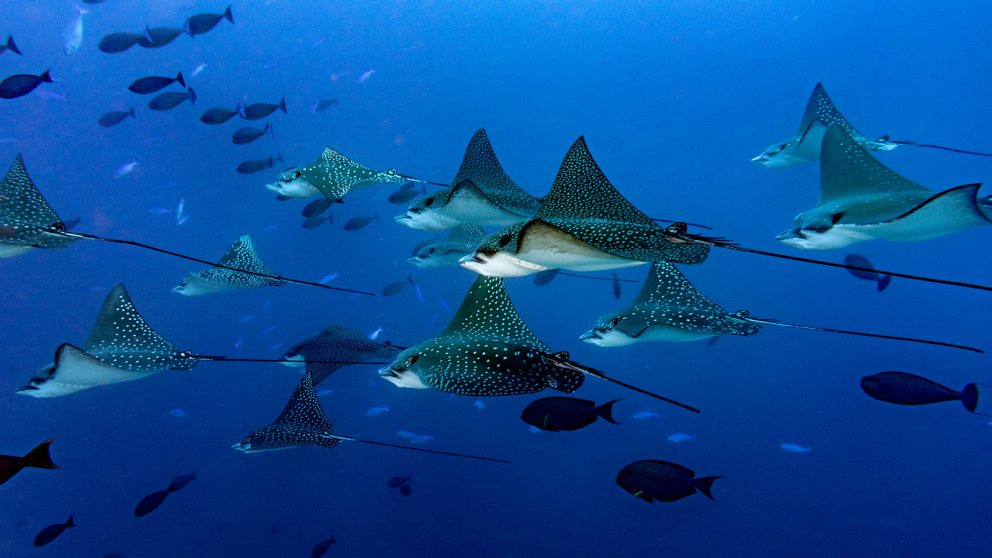A Treaty for the High Seas
11.01.2023

For years now the international community has been negotiating an agreement that will cover more than half of the Earth's surface and establish rules for the conservation and sustainable use of marine biodiversity. Will they succeed?
From Feb. 20 to March 3 at the U.N. headquarters in New York, representatives of the global community will continue to negotiate a global agreement focused on the protection and sustainable use of marine biodiversity in areas beyond national jurisdiction.
As the sixth formal round of negotiations (officially a continuation of the fifth round), many participants believe this will be the last. Formal negotiations began in 2018, with preparatory meetings having taken place for more than 15 years. The last round of negotiations took place in August 2022, and although significant progress was made, the meeting ended after two intense weeks of work with several outstanding issues.
The future High Seas Agreement will apply to almost 60 percent of the Earth's surface. Marine regions outside national jurisdictions are subject to specific legal obligations. This is because outside national zones, all countries can benefit from the resources in these marine areas - but they are also jointly responsible for addressing environmental problems within them such as overfishing, pollution and climate change.
The United Nations Convention on the Law of the Sea (UNCLOS), negotiated 30 years ago, sets out general rules and the legal basis for managing ocean spaces. However, it does not further address the protection and sustainable use of biodiversity and leaves many gaps in the management of these areas. The future High Seas Agreement aims to advance the creation of an integrated approach to international ocean governance and to fill in legal or institutional gaps to the existing governance approach.
The agreement and negotiations focus on four elements: 1. marine genetic resources; 2. measures such as area-based management tools, including the establishment of marine protected areas; 3. environmental impact assessments; and 4. capacity building and the transfer of marine technology. The negotiations will also focus on cross-cutting issues such as institutional arrangements, coordination rules and financing the implementation of the future agreement.
Resource use
A difficult issue in all rounds of negotiations is the use of marine genetic resources; this includes, for example, the genetic material of marine plants, animals, and other organisms. These resources, which are used in pharmaceuticals or cosmetics, among other things, are of enormous importance.
The biggest challenge is how to share the financial returns from these marine resources. The countries of the Global South argue that they are a "common heritage of mankind" and that the benefits of their use should be shared equitably among all countries. They call for this principle to be enshrined in the agreement.
On the other hand, the countries primarily responsible for exploiting, developing, and adding value to these resources argue that while benefits should be shared, they should focus on knowledge and information sharing.
Finally, during the August negotiations, ideas such as a flat fee or some sort of royalty payment were discussed. It is very likely that this issue will remain one of the biggest challenges in the next round of negotiations.
More marine protected areas
For the conservation and sustainable us of marine biodiversity in areas beyond national jurisdiction, area-based management tools, such as the establishment of marine protected areas, are particularly important. These are particularly supported by representatives of civil society and environmental NGOs. Significant progress has been made recently, including in the preparation and review of new proposals and in voting rules that help to ensure that individual states cannot actively obstruct decision-making.
However, one critical issue remains: the relationship of the future agreement and its implementation to existing regimes and bodies (for example, for fisheries or deep-sea minerals) with a mandate in areas beyond national jurisdiction. Some states argue that the future High Seas Treaty should not undermine existing regimes while others suggest that management measures should complement or be compatible with existing regimes.
Limiting environmental risks
The third area of negotiation is environmental impact assessments. These are intended to ensure that planned activities are assessed against agreed environmental criteria and thresholds. Currently, discussions revolve around two main questions: should activities that potentially affect biodiversity in areas outside national jurisdiction also be assessed, or only those activities that take place there? And second, what is the role of the Conference of the Parties (COP) to be established under the agreement, as well as scientific bodies, in reviewing assessments submitted by national authorities? The major ocean users, especially countries from the Global North, want to limit the scope of assessments to reduce potential future requirements. Global South countries, on the other hand, are concerned that the assessments will be too weak and will not provide adequate protection against environmental risks.
On the fourth point, capacity building and technology transfer, negotiators are mostly in agreement. Global South countries in particular are calling for more ambitious commitments and want a list of potential capacity building and technology transfer initiatives to be included in the agreement.
German commitment
Germany is showing a growing commitment global ocean policy. As a member of the High Ambition Coalition for the Protection of Marine Biodiversity, which includes the 27 EU states and another 23 countries, Germany announced an "ocean offensive" during the One Ocean Summit in France in February 2022. The announcement commits Germany to ocean protection and international solutions.
Germany also appointed its first ocean commissioner. Sebastian Unger, based at the Federal Environment Ministry since September 2022, will coordinate and represent Germany on marine protection issues. Asked about the ongoing High Seas negotiations, Unger said, "The future agreement offers a historic opportunity to develop an integrated legal framework for the high seas that combines both protection and sustainable use of the seas."
Building on momentum from Germany's 2022 G7 presidency and the UN Ocean Conference in Lisbon in June 2022, Germany called for a "precautionary pause" on deep-sea mining in areas beyond national jurisdiction at the International Seabed Authority meeting in October. This is a strong signal from Germany, which now joins a small but growing group of countries calling for a pause or complete halt to these activities until it can be ensured that potential risks to the marine environment can be avoided or at least significantly reduced.
A milestone, and then?
A successful conclusion of the negotiations in New York would be a milestone for the protection of the oceans. But the implementation phase must also begin quickly thereafter. To this end, the States must ratify the agreement as quickly as possible and incorporate it into national law. Only then can further implementation and clarification of the outstanding issues from the negotiations begin.
Germany and the European Union have the opportunity to take on an important role as ambitious pioneers in protecting the oceans. The High Seas Agreement offers a historic opportunity to protect and sustainably manage more than half of the Earth's surface - if states act together and with boldness.
This article was first published in Internationale Politik - the magazine for global thinking.
